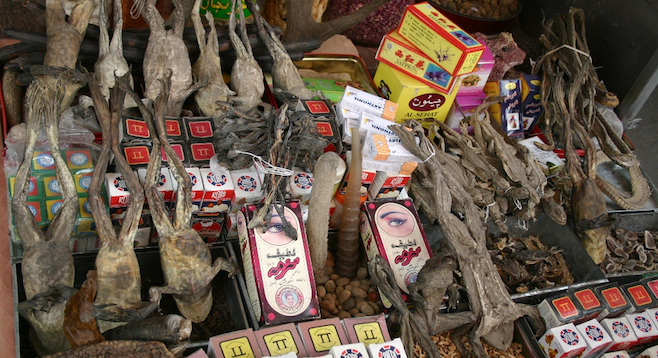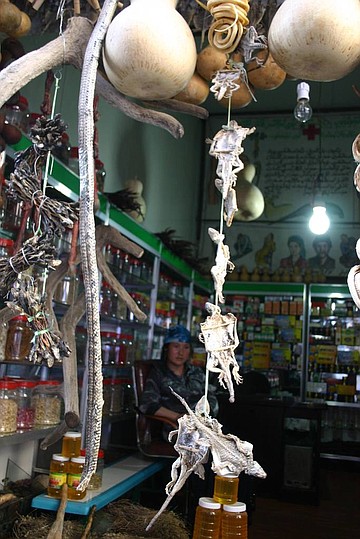 Facebook
Facebook
 X
X
 Instagram
Instagram
 TikTok
TikTok
 Youtube
Youtube

Magic lives in a remote corner of China.
In the northwestern corner of the country, where a bony finger of land divides the land from Kazakhstan, Russia and Mongolia, the traveler will find myth, legend and a way of life unchanged in a thousand years.
While officially Chinese, the people are primarily Uyghurs, eastern European Muslims interspersed with a fine smattering of nomadic Mongols who roam freely over the three mentioned borders with no regard to nationality or race. The Uyghurs have clashed frequently and violently with the majority Han Chinese over several decades as they cling tenaciously to their traditional way of life, keep to themselves, and shun the accommodations of their Chinese masters who have always treated them like less than citizens, while the Mongols pay tribute to no one but their tribal leaders, recognizing no higher secular authority.
Uyghur men are identifiable by their long, neatly groomed beards and four-cornered skull caps, while the women wear heavy henna tattoos and cover their entire head with a heavy burlap-like scarf. The Mongols dress a bit more Western, perhaps due to the worldly exposure their wanderings offer them. But it's a bit disconcerting to see a fellow in cowboy hat with a lasso astride a Bactrian camel.
It is a land where established religion has collided head-on with animism, native superstition and ancient esoteric ritual. Lamas (Tibetan Buddhist priests, not the animal) are more important than government officials, and shamans are an integral part of everyday life. More than anything it is a land of faith where ancient ways have taken on the veneer of religious belief.

In the main town of Kanas – a tiny wooden ville that would make an ideal Western movie set, snuggled in a lost valley surrounded by snowcapped mountains – rows of neat log cabins, left behind by Soviet-era loggers, line the dirt streets where apothecary shops are filled with countless animal parts waiting to be ground into active ingredients for curing any physical malady or for use as ceremonial offerings. Coils of sun-dried snakes and lizards twist and turn in the breeze like so many mobiles, while seller stalls offer powdered beetle and dehydrated frogs.
Reindeer are kept in tiny pens, not as work animals or pets, but to produce new antlers, annually, after the old ones are sawed off and shipped to major cities to be sold as aphrodisiacs at exorbitant prices.
Riding over the rolling hills on a camel, you can hear the multiple layered melodies of Tuvan throat singers emanating from the felt yurts that dot the countryside like giant mushrooms. White silk katas (prayer scarves) twist in the wind, identifying the cabin of a lama. You might witness a young eagle being trained to hunt rabbits for its owner.
Inside every home you will find a shrine to Genghis Khan, himself a practicing shaman, usually an artist’s portrait surrounded by votive candles and food offerings to a spirit most believe still wanders the valleys.
This is the China that tourists do not get to see.
Because of Kanas's proximity to three other nations, there is a strong military presence that offers the paradoxical sight of jack-booted Chinese soldiers walking alongside felt-booted nomads.
This traveler was fortunate to have been there during a full solar eclipse, and it was more fascinating to watch the people than the eclipse itself. As the moon began to move in front of the sun, people began screaming and cowering. Mothers grabbed their babies and huddled on the ground with them in their arms. Many ran into buildings in full flight. A minor panic spread throughout the village, and as full darkness covered the land there was suddenly absolute silence, as though everyone was waiting for the apocalypse to strike with full force. As the moon passed, many raised their arms to the heavens in what I assume were prayers, and I can only wish I had been with one of the lamas at the time to see his reaction to this natural phenomenon.
Even more than the physical trappings of Kanas, it was the reaction of the people to a completely natural wonder that revealed the mindset of an entire region of China and made me realize how time had stopped there long ago.
The inscrutable Chinese government kept Kanas off limits to the public for years, but now is in the process of filling the valley with prefabricated, slab-like structures that will soon pass for their version of four-star tourist hotels. The traveler should note, though, that regardless of tourist-friendly advertising, in the more remote areas such as this one, there will be more and more police roadblocks and random searches.
I was constantly harassed by young thugs who wear police badges but, in truth, work for the Communist party, keeping the rural population in line with brutal and sometimes physical repression.
Fascinating as China is, for the solo traveler, it can be a harrowing place.


Magic lives in a remote corner of China.
In the northwestern corner of the country, where a bony finger of land divides the land from Kazakhstan, Russia and Mongolia, the traveler will find myth, legend and a way of life unchanged in a thousand years.
While officially Chinese, the people are primarily Uyghurs, eastern European Muslims interspersed with a fine smattering of nomadic Mongols who roam freely over the three mentioned borders with no regard to nationality or race. The Uyghurs have clashed frequently and violently with the majority Han Chinese over several decades as they cling tenaciously to their traditional way of life, keep to themselves, and shun the accommodations of their Chinese masters who have always treated them like less than citizens, while the Mongols pay tribute to no one but their tribal leaders, recognizing no higher secular authority.
Uyghur men are identifiable by their long, neatly groomed beards and four-cornered skull caps, while the women wear heavy henna tattoos and cover their entire head with a heavy burlap-like scarf. The Mongols dress a bit more Western, perhaps due to the worldly exposure their wanderings offer them. But it's a bit disconcerting to see a fellow in cowboy hat with a lasso astride a Bactrian camel.
It is a land where established religion has collided head-on with animism, native superstition and ancient esoteric ritual. Lamas (Tibetan Buddhist priests, not the animal) are more important than government officials, and shamans are an integral part of everyday life. More than anything it is a land of faith where ancient ways have taken on the veneer of religious belief.

In the main town of Kanas – a tiny wooden ville that would make an ideal Western movie set, snuggled in a lost valley surrounded by snowcapped mountains – rows of neat log cabins, left behind by Soviet-era loggers, line the dirt streets where apothecary shops are filled with countless animal parts waiting to be ground into active ingredients for curing any physical malady or for use as ceremonial offerings. Coils of sun-dried snakes and lizards twist and turn in the breeze like so many mobiles, while seller stalls offer powdered beetle and dehydrated frogs.
Reindeer are kept in tiny pens, not as work animals or pets, but to produce new antlers, annually, after the old ones are sawed off and shipped to major cities to be sold as aphrodisiacs at exorbitant prices.
Riding over the rolling hills on a camel, you can hear the multiple layered melodies of Tuvan throat singers emanating from the felt yurts that dot the countryside like giant mushrooms. White silk katas (prayer scarves) twist in the wind, identifying the cabin of a lama. You might witness a young eagle being trained to hunt rabbits for its owner.
Inside every home you will find a shrine to Genghis Khan, himself a practicing shaman, usually an artist’s portrait surrounded by votive candles and food offerings to a spirit most believe still wanders the valleys.
This is the China that tourists do not get to see.
Because of Kanas's proximity to three other nations, there is a strong military presence that offers the paradoxical sight of jack-booted Chinese soldiers walking alongside felt-booted nomads.
This traveler was fortunate to have been there during a full solar eclipse, and it was more fascinating to watch the people than the eclipse itself. As the moon began to move in front of the sun, people began screaming and cowering. Mothers grabbed their babies and huddled on the ground with them in their arms. Many ran into buildings in full flight. A minor panic spread throughout the village, and as full darkness covered the land there was suddenly absolute silence, as though everyone was waiting for the apocalypse to strike with full force. As the moon passed, many raised their arms to the heavens in what I assume were prayers, and I can only wish I had been with one of the lamas at the time to see his reaction to this natural phenomenon.
Even more than the physical trappings of Kanas, it was the reaction of the people to a completely natural wonder that revealed the mindset of an entire region of China and made me realize how time had stopped there long ago.
The inscrutable Chinese government kept Kanas off limits to the public for years, but now is in the process of filling the valley with prefabricated, slab-like structures that will soon pass for their version of four-star tourist hotels. The traveler should note, though, that regardless of tourist-friendly advertising, in the more remote areas such as this one, there will be more and more police roadblocks and random searches.
I was constantly harassed by young thugs who wear police badges but, in truth, work for the Communist party, keeping the rural population in line with brutal and sometimes physical repression.
Fascinating as China is, for the solo traveler, it can be a harrowing place.
Comments